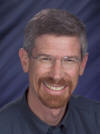December 2007
![]()
AutomatedBuildings.com
[an error occurred while processing this directive] (Click Message to Learn More)
 Systems integrators, business managers, and
policy-makers from electric, manufacturing, commercial building, and home
automation industries discover common ground for advancing a smarter
electricity system
Systems integrators, business managers, and
policy-makers from electric, manufacturing, commercial building, and home
automation industries discover common ground for advancing a smarter
electricity system

Steve Widergren
Administrator,
GridWise Architecture Council
steve.widergren@pnl.gov
O ver 160 industry experts assembled in Albuquerque, New Mexico last week to join the GridWise Architecture Council (GWAC) for the first Grid-Interop Forum. For decades, advances in information technology (IT) and telecommunications have been made their way into industrial sectors such as manufacturing, commercial buildings, and residences. Similarly, electric system operations from generation, through delivery, and up to the consumer?s meter have taken measured steps to incorporate the fruits of new technology. Each industry sector has applied IT solutions, initially in proprietary forms while moving toward open standards mechanisms. Despite the commonality of their IT issues, most of these developments have taken place in isolation with little knowledge or benefit of the progress being made in each sector. At Grid-Interop, attendees representing these various sectors shook the walls that divide them and explored ways that their automation technology can connect together and coordinate to create a better electricity system.
| |
| |
| |
| |
| |
| |
| |
| |
| |
| |
| [an error occurred while processing this directive] |
?One person?s system is another one?s component.? Such perplexing perspectives were heard during the meeting as participants grappled with the multi-dimensional puzzle of integration across the many automation elements in the electricity system. People addressing home area networking standards from the electric utility perspective became aware of others working on similar standards in the residential automation space. Service-oriented architecture concepts were presented from a variety of systems experts including communication networking, commercial buildings, manufacturing, and enterprise systems. People were not just talking about distributed agent systems, but about real-time interactions with independent agents. These agents, acting on their owner?s behalf with local objectives, when combined can deliver regional benefits.
In the 2 days of sessions over 90 speakers presented concepts, issues, and actions related to interoperability. Balanced representation was an important theme that pervaded the event. Improving interoperability on a scale this broad cannot be done by anyone sector, but requires the participation of all the stakeholders. Special ?action roundtable? sessions brainstormed gaps in interoperability between stakeholders. This resulted in several project proposals that identified champions and actions to advance interoperability to support business cases such as appliances responding to demand response signals and enterprise information exchange.
[an error occurred while processing this directive] During the meeting, the GWAC recognized:
Albuquerque Mayor Martin J. Ch?vez, for his public support of the GWAC interoperability principles with the United States Conference of Mayors
Quantum Leap?s Jonathan Dale and Apperson Johnson for the paper ?Rational Agents for Decentralized Environments,?
Portland General Electric?s Conrad Eustis, Whirlpool?s Gale Horst, and Pacific Northwest National Laboratory?s Don Hammerstrom for their paper ? Appliance Interface for Grid Responses,?
Cornice Engineering?s Gary McNaughton and NRECA?s Robert Saint for their paper ? Multi-Speak and CIM ? A Roadmap to Interoperability.?
Proceedings from the meeting will be available in the coming weeks and include the 25 papers, panel session abstracts, and the results of the action roundtable discussions.
Smart grid concepts are pressuring the electric infrastructure landscape to change. Society?s need for a more efficient, resilient, and environmentally sustaining energy system means that all aspects of the electric system need to collaborate. Communicating a simple message about the importance of interoperability seems to be elusive; however, over 3 days in November, the energized engagement of 160 people from different backgrounds demonstrated that they not only understand the message, but they intend to do something about it.
[an error occurred while processing this directive]
[Click Banner To Learn More]
[Home Page] [The Automator] [About] [ Subscribe ] [Contact Us]

